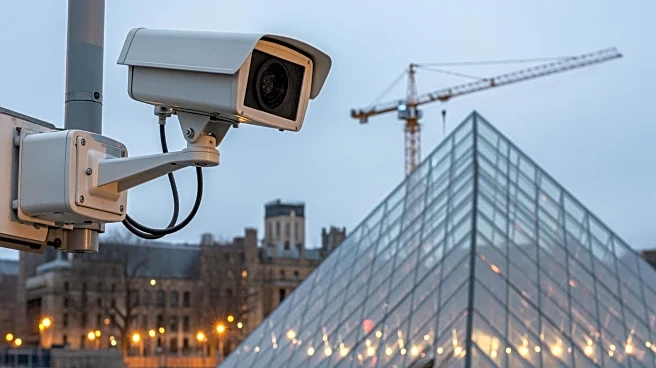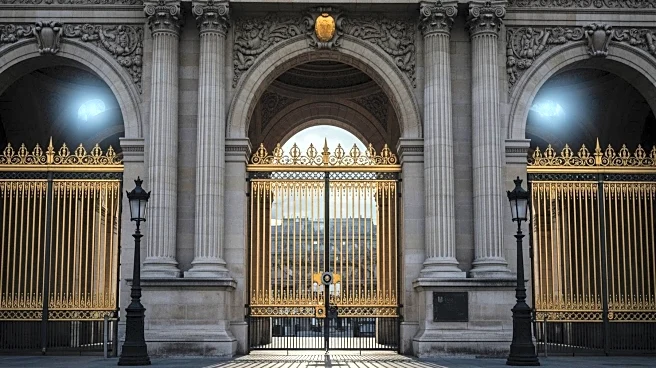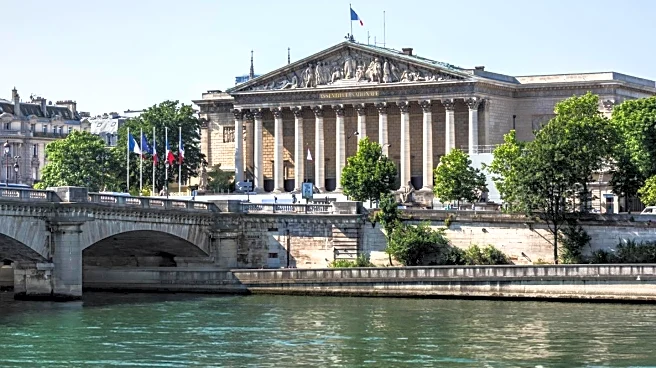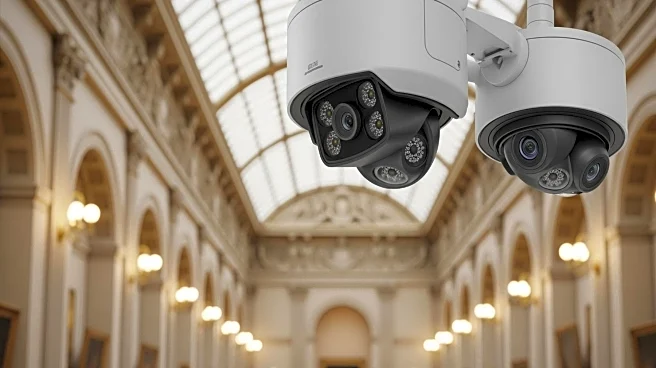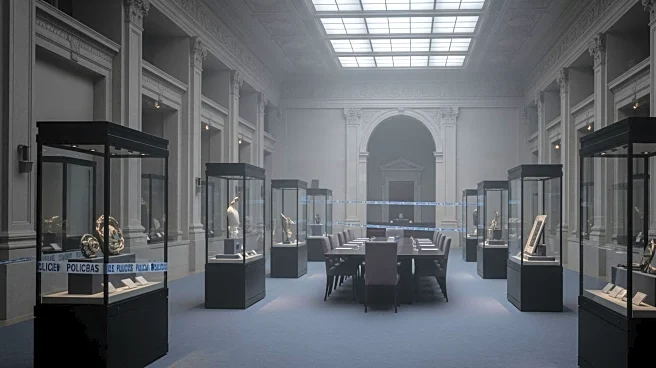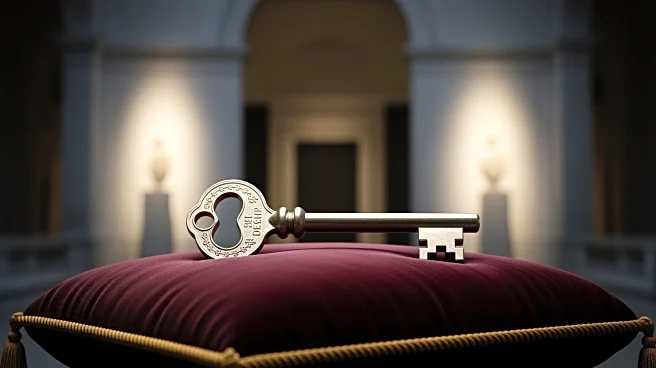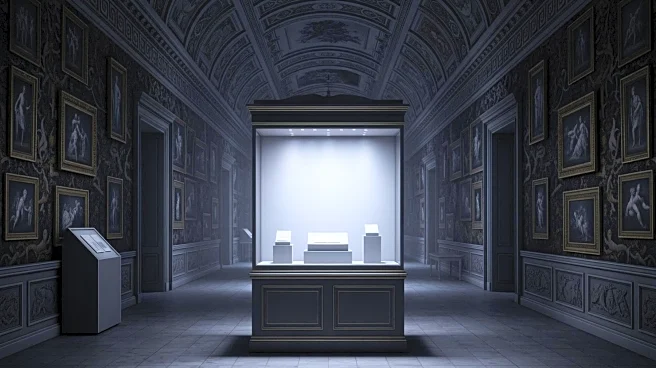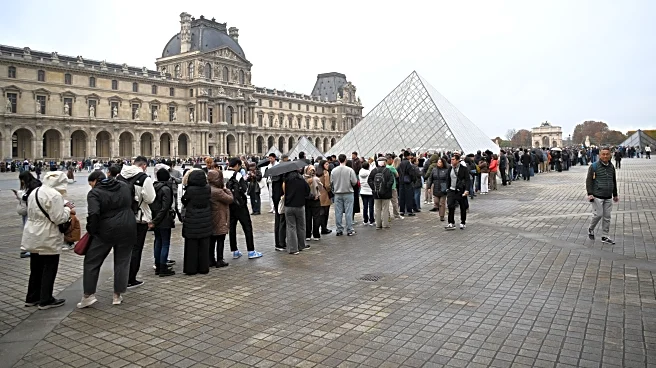What's Happening?
On Sunday morning, four thieves executed a meticulously planned robbery at the Louvre Museum in Paris, posing as construction workers. They arrived in a truck, wearing yellow vests, and set up traffic
cones to disguise their intentions. Using an electric ladder, they accessed the Apollo Gallery, home to priceless crown jewels, and used power tools to break through a window. The museum's security command center quickly alerted the police, but the thieves managed to escape. The incident has raised questions about the security protocols at the Louvre, a site frequently undergoing renovations and maintenance.
Why It's Important?
The robbery at the Louvre highlights significant security vulnerabilities at one of the world's most renowned museums. The ease with which the thieves accessed the gallery and executed their plan raises concerns about the effectiveness of current security measures. This incident could lead to increased scrutiny of museum security practices, particularly in institutions undergoing frequent construction and renovations. The theft of culturally significant artifacts poses a threat to France's national heritage, prompting discussions on the balance between public access and security.
What's Next?
French authorities are conducting a thorough investigation to identify the perpetrators and recover the stolen jewels. The incident may lead to a reevaluation of security protocols at the Louvre and other museums, potentially resulting in enhanced measures to prevent future thefts. The cultural heritage community may advocate for increased funding and resources to bolster security, ensuring the protection of valuable artifacts. Additionally, the investigation could expand internationally if connections to organized crime or other countries are discovered.
Beyond the Headlines
The Louvre heist raises ethical questions about the preservation of cultural heritage and the impact of crime on national identity. The theft of historically significant jewels represents a loss not only in monetary terms but also in cultural and emotional value. The incident may lead to discussions on the role of museums in safeguarding history and the ethical responsibilities of governments to protect cultural assets. Furthermore, the robbery could influence global museum security practices, encouraging institutions worldwide to reassess their vulnerabilities and adopt more robust protective measures.
